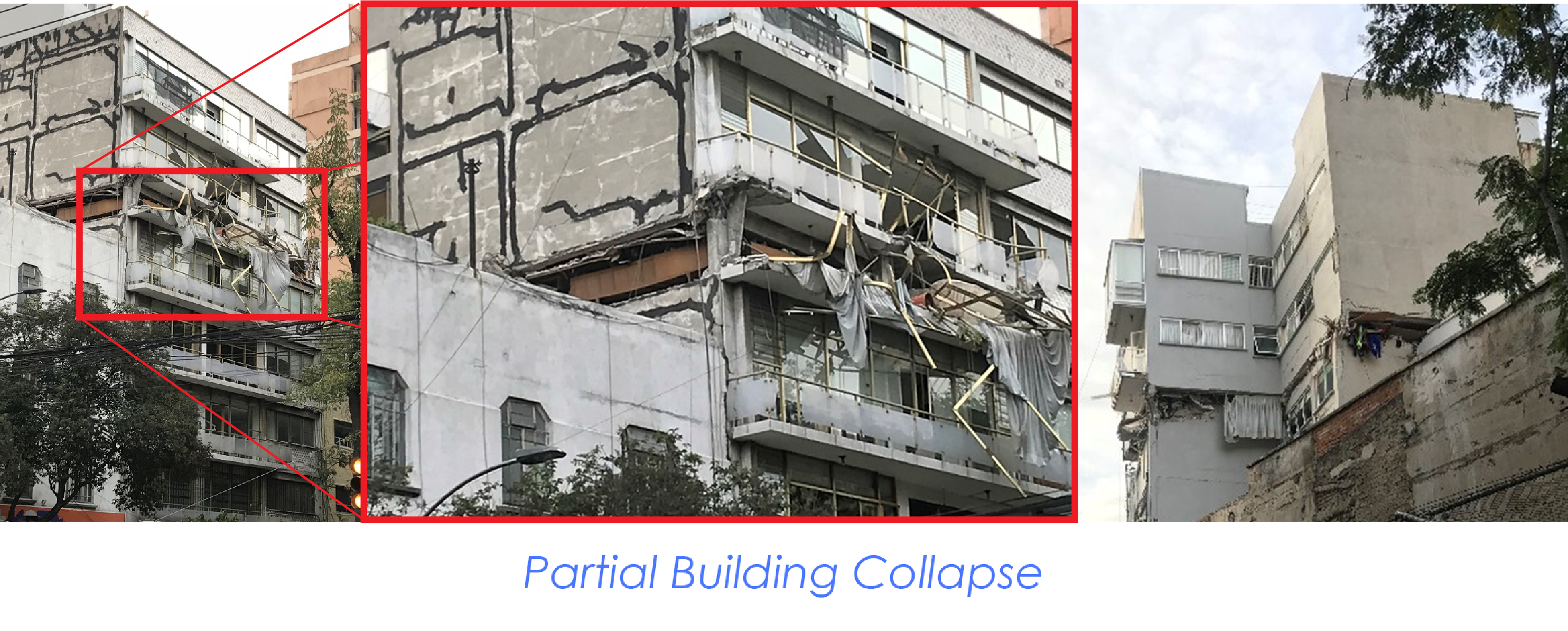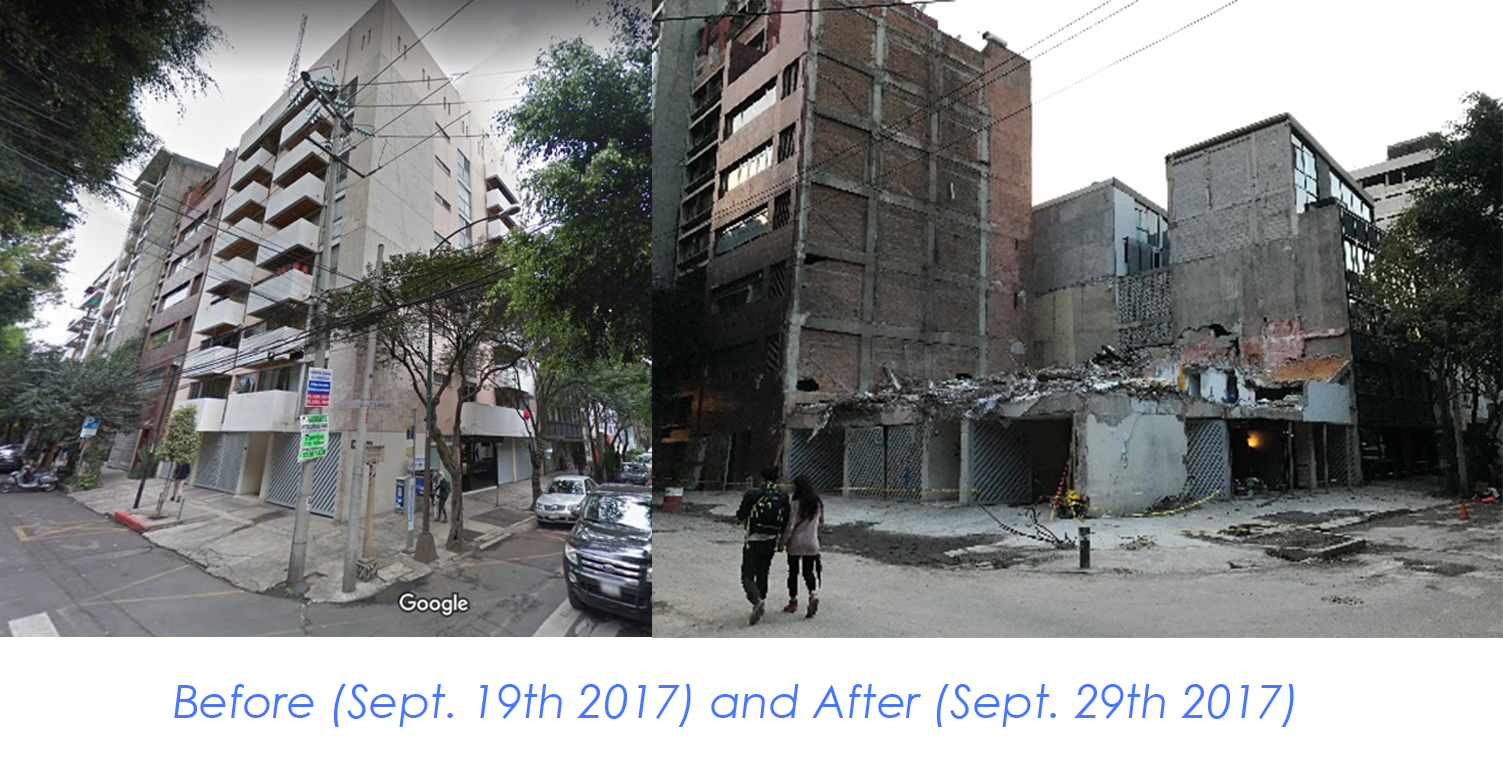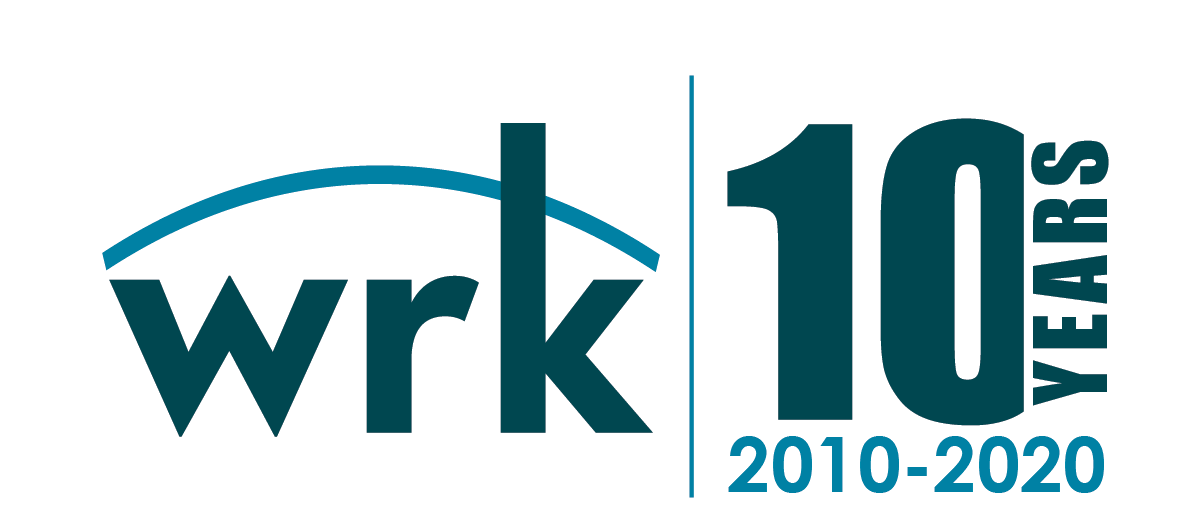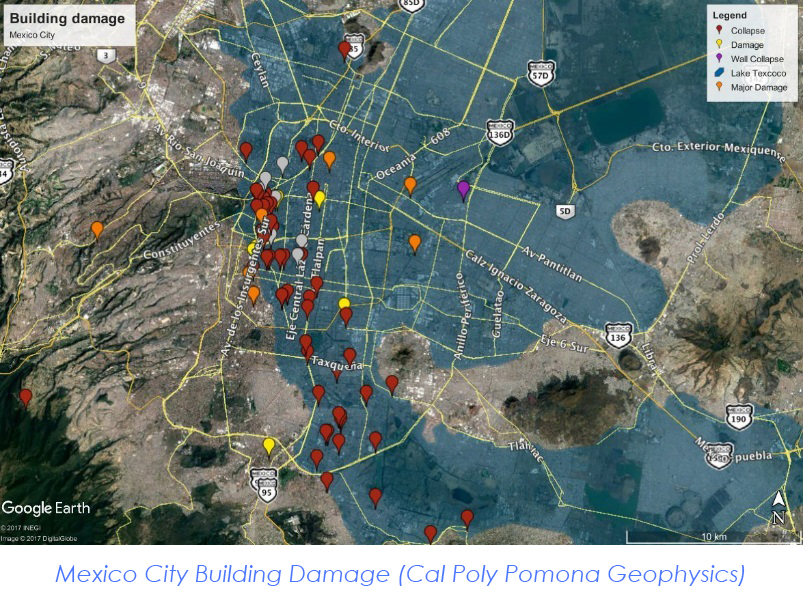Mexico City Earthquake Reconnaissance – Day 2
Central Mexico Earthquake Reconnaissance – Day 2

We wrapped up day one at 11:00 PM, but were back at Starbucks by 7:30 AM again to formulate our plan of attack for day two. After a quick coffee and breakfast sandwich, we headed out again toward the La Condesa area to continue our search for damaged buildings.
We learned more about the earthquake motions this morning and how the September 19, 2017 earthquake was very different than the 1985 event. On September 19, 1985, a magnitude 8.0 subduction zone earthquake occurred roughly 230 miles away, but this event shook Mexico City for nearly 1½ minutes. (Note this event was similar to the expected Cascadia Subduction Zone event). The seismic waves that reached the city were very damaging to tall buildings with high fundamental periods. In essence, the soils were excited to a period of oscillation that matched the period of many tall buildings, causing them to be heavily damaged and even collapse. An estimated 10,000 people died in 1985.
By contrast, the September 19, 2017 earthquake was a deep intraplate event (similar to the 2001 Nisqually Earthquake) with a magnitude of 7.1. The epicenter was only 76 miles away from Mexico City and strong shaking lasted less than 30 seconds. However, as every earthquake motion is different due to many factors (such as depth, frequency content, duration, etc.), this event did not excite the tall buildings in Mexico City, but rather the low-rise to mid-rise buildings which have lower fundamental periods.
Accelerometers stations located around Mexico City recorded the ground shaking and revealed higher accelerations were felt by these low- to mid-rise buildings at locations primarily in alignment with the ancient Lake Texcoco shoreline. The shoreline has thinner layers of lakebed deposits, which respond differently than areas with thicker deposits. This earthquake excited the thinner layers, which in turn amplified the earthquake motions at the ground surface and resulted in devastating effects on many low-rise and mid-rise buildings.
 Preliminary data developed by the University National Academia Mexico (UNAM) shows acceleration data from stations scattered around the city. Most of the stations show low ground accelerations with very little amplification of ground shaking due to soil conditions. However, there were two stations (stations LEAC and SCT2) that show higher levels of strong shaking occurring in the one to two second period range. This is attributed to soil conditions at these locations, which are both on shallow Lake Texcoco materials. It is interesting to note that for confined masonry systems, the estimated fundamental period for these buildings with heights between four and twelve stories roughly corresponds with the one to two second period range. Based on the buildings we observed that were heavily damaged or collapsed, they seem to fit within this range of four to twelve stories in height.
Preliminary data developed by the University National Academia Mexico (UNAM) shows acceleration data from stations scattered around the city. Most of the stations show low ground accelerations with very little amplification of ground shaking due to soil conditions. However, there were two stations (stations LEAC and SCT2) that show higher levels of strong shaking occurring in the one to two second period range. This is attributed to soil conditions at these locations, which are both on shallow Lake Texcoco materials. It is interesting to note that for confined masonry systems, the estimated fundamental period for these buildings with heights between four and twelve stories roughly corresponds with the one to two second period range. Based on the buildings we observed that were heavily damaged or collapsed, they seem to fit within this range of four to twelve stories in height.
We resumed our “walk about” in the La Condesa area and came across an eight-story building that suffered complete collapse, or “pancake failure”, of the sixth story. We were told one person perished in this building at the collapsed sixth level. This confined masonry building is sandwiched between four-story buildings on either side with no apparent seismic joints between them. Similar to the building we entered yesterday with column failures, this building has virtually no shear walls on the front and rear sides of the building, but has solid walls on the longitudinal sides.

It appears the building failure may be attributed to the fact that its lateral strength in the transverse direction was very weak, but it is also due to the lack of seismic joints between adjacent buildings. It appears the adjacent buildings may have helped to laterally restrain the lower five stories and resulted in significant earthquake force and displacement demands being concentrated at the sixth story. The lower stiffer buildings may have “locked” the base of the taller building in place, resulting in a “flag pole” effect at the sixth story. These amplified demands appear to have overwhelmed the available lateral strength at this level, leading to collapse. Without adequate seismic joints, building designers must take into account the adjacent buildings to truly understand the response impacts these adjacent buildings will have.

While we were on the street taking photos of the partially collapsed building, we were approached by a group of schoolchildren and parents handing out cookies and paper origami in the shape of hearts. They thanked us many times for coming to Mexico City to help with building inspections after the earthquake. It was inspiring to see such warmth and hospitality after their city and neighborhoods were scarred with building damage and loss of life. The resiliency of the people after this earthquake was apparent. These children wanted to help their community in any way they could, and for them it meant handing out cookies and paper hearts to the response and recovery workers they encountered. Very cool!!
After a quick lunch break we learned of another collapse site several blocks away and started to meander our way towards it. Along the way we saw numerous examples of damaged confined masonry buildings. These buildings, for the most part, fit within the four to eight story range and appeared to have experienced significant shaking.
We arrived at the street intersection where a building collapse occurred. On the morning of September 19th, an eight-story building occupied this corner. However, when we arrived all that was left of the residential building was the first level. Since the earthquake, many buildings that collapsed have been removed. We were not certain why the upper seven stories collapsed while the first level did not, but it may have been due to the very thick first level slab, which appeared to be close to 18” thick. We could not find out if anyone perished in this building, but demolition only occurs after all rescue and recovery is completed.

As we wound down the day, I was reflecting on the “take-aways” for the past two days. Damage ranged from broken glass and delaminated concrete plaster, to adjacent building pounding damage, heavily cracked confined masonry shear walls, concrete column failures, and out-of-plane masonry infill failures. A common feature noticed in nearly every heavily damaged building was the presence of lateral force resisting system irregularities, such as discontinuous shear walls or braces, highly torsional layout of shear walls, soft stories, weak stories, and short/captured columns. The damage witnessed only reinforces to me the need for strong seismic design standards and thoughtful building lateral system layout skills to avoid “bad actor” buildings subject to strong ground shaking.

Brian Knight, P.E., S.E.
Founder and Principal of WRK Engineers, a Structural & Seismic Engineering consulting firm that is in the business of solving structural and seismic problems with adaptive solutions that protect and preserve people and assets.
Check back for more daily posts as I share my observations from Mexico City. If you have questions or comments, please go to our Contact page. I would love to get your input.


